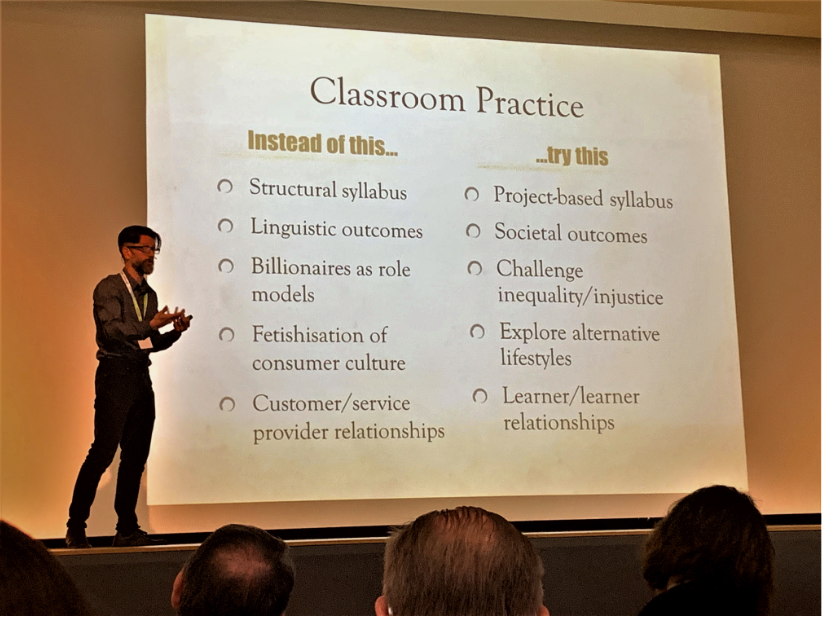Teaching English in Times of Corona: Why Coaching Principles Make Online Learning Better
Many teachers, trainers and organizations are finding themselves suddenly remote, and the behaviors that surround online learning are different from in-person training. Within this new opportunity for ELT businesses to pivot and move their work online, there are a few challenges that need to be addressed.
It was exactly halfway through our last Language Coaching Foundation Course when the country-wide ‘shelter in place’ orders started to roll out across the globe. We had ELT professionals from Japan, Ukraine, Germany, Italy, Hungary, the United States, and Chile. This unprecedented global pandemic required that we hold space for our course participants. If just to share their experiences and to discuss how this situation was affecting their work.
Many companies and independent professionals are operating as usual, if not thriving, in the virtual economy. But this hasn’t been the case for everyone. How many times have you heard a language learner or teacher say, “I prefer face-to-face; I need the contact”? However, many are now forced to choose between completely stopping their lessons or giving the online thing a try.
And it turns out that online language instruction has become an immense comfort during this time. In spite of the perceived challenges for those not yet comfortable with it, learners and trainers are still able to connect and support one another.
Online education: ELT at the crossroads
This period in ESL/EFL instruction is a call to action. Things aren’t just going to go back to the way they were before the lockdown. There will undoubtedly be many converts from both professionals and learners who were hesitant about online sessions.
The question then arises: how will language training organizations integrate a long-term digital plan into their institutions and promote the necessary learner autonomy that comes with online education?
One of the major challenges of online education for teachers and organizations is that they are still held accountable for learning outcomes such as test scores and level advancementof their students. Yet in a remote learning situation, the instructor doesn’t control the classroom outside of the computer screen. The institution also no longer controls the presence and engagement of the client.
Teachers are now in a position of having to share the learning responsibility with the student.
Online education has an increased level of learner autonomy built into it, and that is perfectly suited for actually learning a language.
Teachers are now in a position of having to share the learning responsibility with the student; in a way that they may never have been challenged to do before. Online students have all the resources and access they need to continue to progress in their target language if they choose to own the responsibility of learning, and use their resources wisely.
This is the “new normal” and things aren’t going back. So, let’s talk about how to support teachers and trainers in the new normal, shall we?
Seeing yourself as a language coach rather than a traditional teacher
Language coaching is an applied methodology incorporating coaching fundamentals into the language learning context. The role of a language coach is to support and empower the learner on their self-led learning journey.*
One of the fundamental principles in language coaching is that the coach and the learner share responsibility for learning. This is also essential for an effective online learning classroom. If that is not a concept that your learners have adopted, then now would be a great time to introduce it.
This can be done with an informal conversation about what they can do outside of your sessions to continue to advance in their language learning. Or it can be done in a more formal and contractual type of agreement that outlines their level of engagement.
Trainers can promote autonomy through drawing attention to and building awareness of the learning process.
Once the understanding of learner responsibility has been brokered, the language teacher can begin to support the learner. Trainers can promote autonomy through drawing attention to and building awareness of the learning process.
The latter works best through questioning and active listening. Use questions that focus on building the meta-cognition of the language usage process and target language communication. This will boost learner autonomy and ensure that the learner continues to grow and thrive in the language acquisition process.
Online learning as the new standard – final thoughts
The new normal is an opportunity for language professionals and language learners.
If we are willing to recognize the unique challenge of building learner autonomy and choose to address this, then the world of ESL/EFL will come out of this crisis with an enriched understanding of how truly limitless our potential is to empower English language learners from anywhere in the world.
For sample questions and further guidance on how to apply language coaching techniques visit our website at www.internationallanguagecoaching.com
*Definition of language coaching developed by the International Language Coaching Association.












